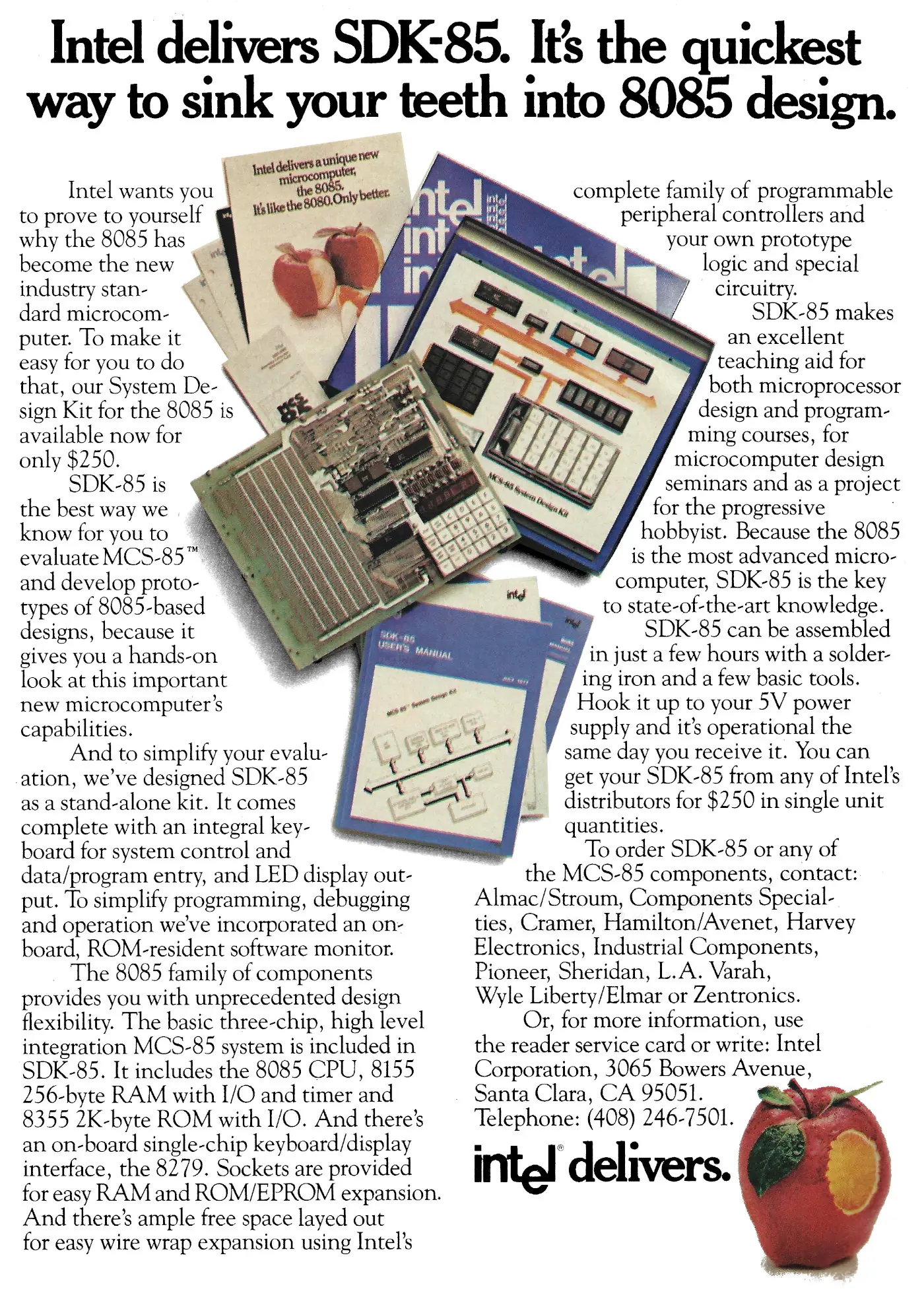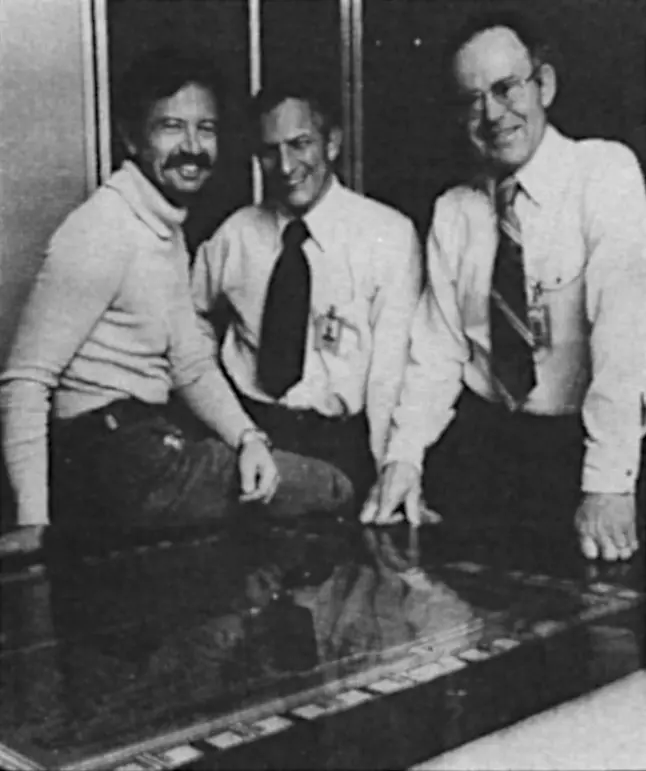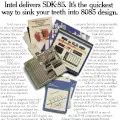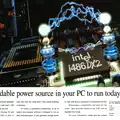Intel Advert - November 1977
From Byte - The Small Systems Journal

Intel delivers SDK-85. It's the quickest way to sink your teeth into 8085 design
Back in the 1970s, almost every time a new CPU came out it would most likely possess an entirely new instruction set.
Even within the same range of computers, often code would have to be changed between models as memory addresses would be different depending upon how much RAM was available, so software developers - especially those writing compilers and the like - needed all the help they could get.
This advert is for an Intel Software Development Kit - the tools needed to write code against and develop hardware to run with Intel's new 8085, the 5-volt version of the 8-bit 8080, the original version of which had been used in the Altair 8800 and IMSAI 8080 amongst many others.
It included the actual hardware - the 8085 CPU, 256 bytes RAM, I/O and timer and 2K ROM - all for only $250, or about £1,490 in 2025 money.
The 8085, whilst being cheaper and easier to build around thanks to its simplified power requirements, was never hugely popular as it was overshadowed by Zilog's Z80, which was significantly cheaper to buy and which - being a clone of the 8080 - was compatible with it.

Andy Grove, Robert Noyce and Gordon Moore of Intel. From Micro Decisions, May 1982Intel was one of the "Fairchildren" - one of many companies that formed after the "Traitorous Eight" left transistor inventor William Shockley's company and set up Fairchild Semiconductor.
In this case it was Robert Noyce and Gordon Moore, the latter of which would later coin "Moore's Law", which loosely states that processor power will double every 18 (or 12) months.
Intel came to dominate CPU manufacture during the 80s and 90s, in particular thanks to its alliance with Microsoft in the "Wintel" (Windows/Intel) hegemony, although ARM, the company that formed out of Acorn Computers has, thanks to licencing and the subsequent use of its designs in almost every mobile phone ever made, "sold" more chips.
Whilst known for its headline x86 line which grew out of the 4004 and 8008, via chips like the 8080 and 8085, and which launched with the 8086, Intel had also dabbled with other application-specific chips, including in 1983 the 82730 "text co-processor" - a chip which was intended to mean "more powerful word processing at a lower cost for users".
It offered 200 characters per line, 2,000 scans each frame window (whatever that meant), windows, dual cursors, a zoom feature and a virtual screen mode and, according to Intel, could be used with 8-, 16- or 32-bit data buses. Intel's Bill Ringer said of it that:
"we are giving the word processor designers facilities to implement features which previously were very clumsy".
Personal Computer News said of the whole thing that:
"it makes the possibility of applications software embedded in silicon look more and more likely"[1].
Whilst software had been available on plug-in chips since at least Commodore's PET in 1977, through the Exidy Sourcerer right up to the BBC Micro, hardware-based applications didn't in the end destroy the software industry.
Date created: 01 July 2012
Last updated: 17 October 2025
Hint: use left and right cursor keys to navigate between adverts.
Sources
Text and otherwise-uncredited photos © nosher.net 2025. Dollar/GBP conversions, where used, assume $1.50 to £1. "Now" prices are calculated dynamically using average RPI per year.

